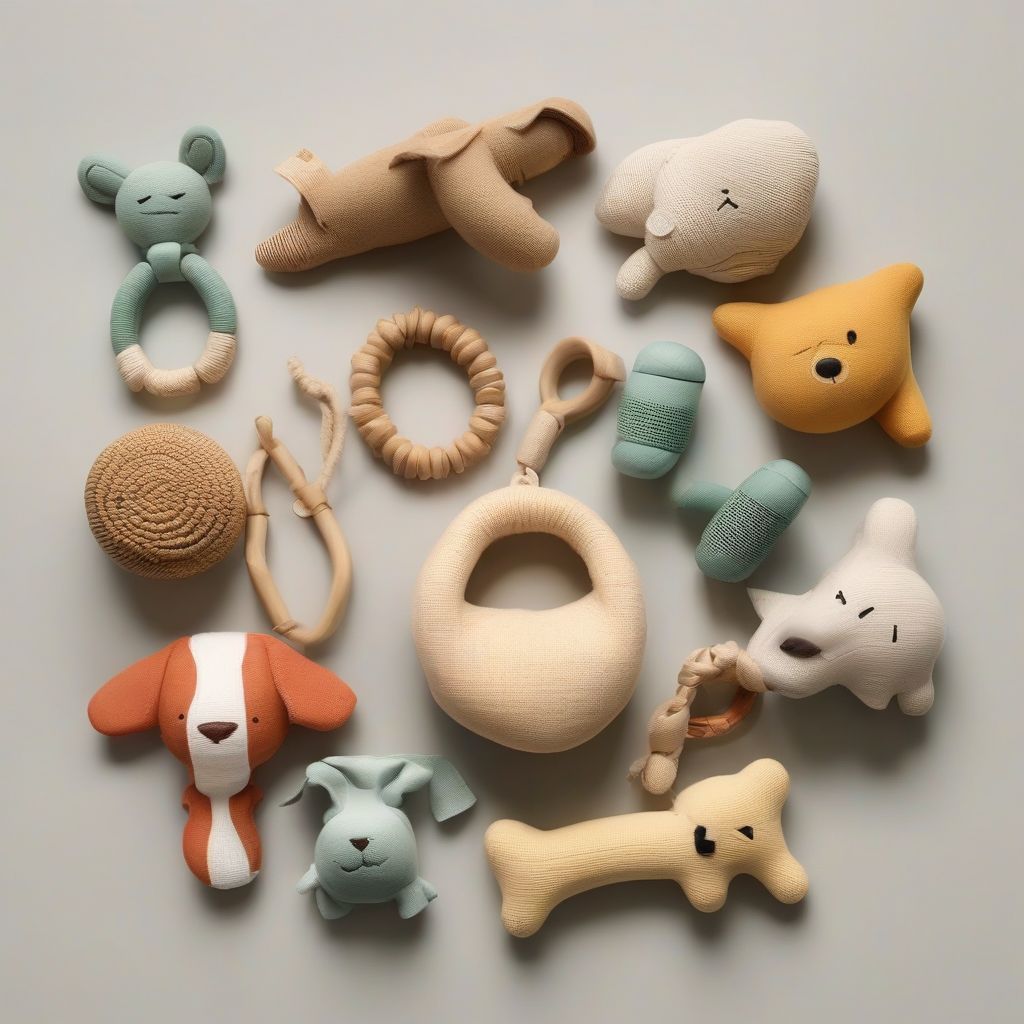As a nutritionist and meal-prep coach, I’m passionate about healthy living for both people and their furry companions. And just like with human food choices, we can extend that mindfulness to our pet’s toys! Choosing sustainable toys isn’t just a trend; it’s about protecting our planet while pampering our pets. But with so many options on the market, how do you make eco-friendly choices? Let’s explore how to find durable, safe, and planet-conscious toys your pet will love.
Why Sustainable Pet Toys Matter
Before we dive in, let’s understand why opting for sustainable pet toys is so crucial. Traditional pet toys often contribute to environmental issues:
- Plastic Pollution: Many pet toys are made from plastic, which takes hundreds of years to decompose, harming wildlife and ecosystems.
- Resource Depletion: Conventional toy manufacturing often consumes vast amounts of resources like water and energy.
- Harmful Chemicals: Some toys contain toxic chemicals that can leach into the environment and potentially harm pets.
By choosing sustainable toys, you’re making a conscious decision to reduce your pet’s environmental pawprint and support a healthier planet for all.
Key Factors for Choosing Sustainable Pet Toys
Ready to shop smarter? Keep these essential factors in mind:
1. Material Matters: Opt for Eco-Friendly Options
The foundation of a sustainable pet toy lies in its materials. Look for toys crafted from:
- Natural Rubber: This renewable resource is durable, non-toxic, and biodegradable.
- Organic Cotton: Toys made from organic cotton are free from harmful pesticides and chemicals, making them safer for your pet and the environment.
- Hemp: Hemp is a fast-growing, durable fiber that requires minimal water and pesticides to grow, making it an excellent eco-friendly choice.
- Bamboo: Known for its rapid growth, bamboo is a highly sustainable and renewable resource that’s also naturally antimicrobial.
- Recycled Materials: Give materials a second life by choosing toys made from recycled plastic bottles, fleece, or even rubber.
2. Durability: Longer-Lasting Fun
Sustainable often means durable. Toys made from robust materials like natural rubber or tightly woven hemp can withstand even the most enthusiastic chewers.
Expert Tip: Look for toys with minimal seams and attachments, as these are often the first areas to break down.
3. Ethical Manufacturing Practices
Support companies that prioritize ethical sourcing, fair wages, and safe working conditions. Look for certifications like Fair Trade, GOTS (Global Organic Textile Standard), or B Corp, indicating a commitment to social and environmental responsibility.
4. Safety First: Non-Toxic and Pet-Friendly
Always prioritize your pet’s safety. Choose toys free from harmful chemicals, dyes, and small parts that could pose a choking hazard.
Expert Tip: Look for toys specifically designed for your pet’s size and chewing habits.
5. Biodegradability and Compostability
At the end of their life, sustainable toys should have a minimal environmental impact. Opt for toys that are biodegradable or compostable, meaning they can break down naturally without leaving harmful residues.
 Sustainable Pet Toys
Sustainable Pet Toys
Sustainable Alternatives to Popular Pet Toys
Now that you understand the key factors, let’s explore some fantastic sustainable alternatives to common pet toys:
- Instead of Plastic Chew Toys: Opt for natural rubber chew toys, such as those from brands like KONG or West Paw.
- Instead of Plush Toys with Synthetic Fillings: Choose toys made with organic cotton or hemp fabric and filled with natural materials like wool or recycled fibers.
- Instead of Tennis Balls: Consider rubber or wool fetch toys that are more durable and environmentally friendly.
- Instead of Plastic Food Puzzles: Look for puzzles made from sustainable bamboo or natural rubber.
Extending the Lifespan of Your Pet’s Toys
- Rotate Your Pet’s Toys: Keep things exciting and prevent boredom by rotating your pet’s toys regularly. This simple trick can also extend the lifespan of each toy.
- Promptly Repair Minor Damages: Don’t toss away a toy at the first sign of wear and tear. A little sewing or patching can often give a toy a new lease on life.
- Wash Toys Regularly: Proper cleaning not only keeps toys hygienic but also helps prevent the buildup of dirt and grime that can degrade materials faster.
Making a Difference One Toy at a Time
Choosing sustainable toys for your pet is a powerful way to reduce your environmental footprint while still providing them with enriching and enjoyable play experiences. By understanding the key factors to consider and exploring eco-friendly alternatives, you can make responsible choices that benefit both your furry friend and the planet.
Remember, every small step towards sustainability makes a difference.
What are your favorite sustainable pet toy brands or DIY ideas? Share your thoughts and eco-friendly tips in the comments below!
[amazon bestseller=”sustainable dog toys”]
